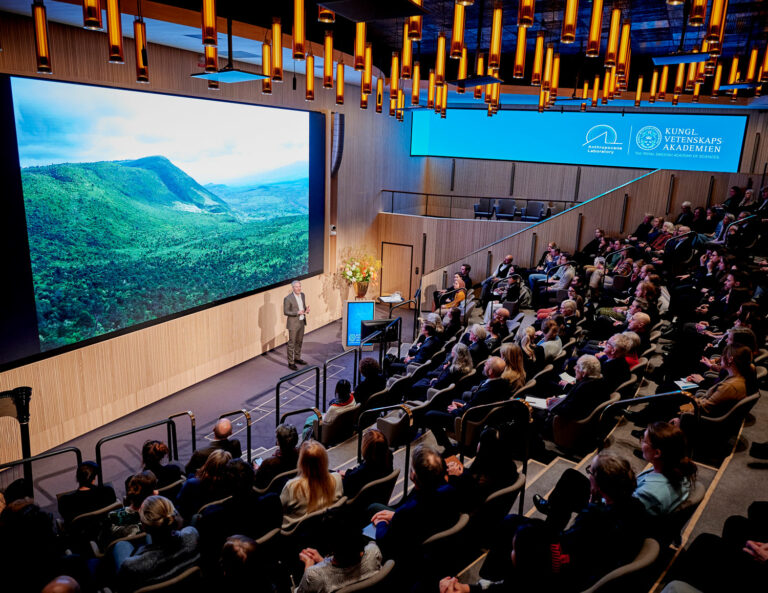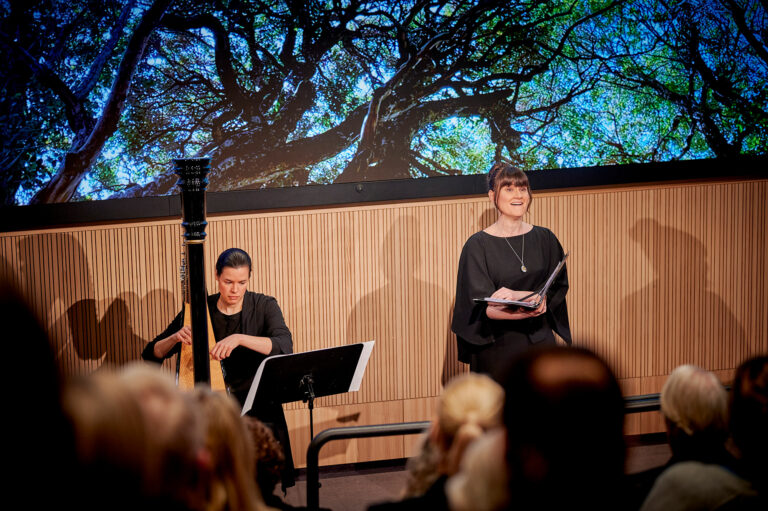On 13 February, the Anthropocene Laboratory, the Academy’s latest initiative for sustainable development, was inaugurated in a packed Beijer Hall in the presence of HRH The Crown Princess Victoria.

Following the opening address by the Academy’s Secretary General, Hans Ellegren, the Director Henrik Österblom presented an overview of the programme’s vision, mission, and plans, as well as its perspective on science, art, and societal change.
Three of the programme’s researchers, Dianty Ningrum, Chelsea Kaandorp and Peter Søgaard Jørgensen, presented their projects under the headings Hope in the Anthropocene, The Intertwined Biosphere, and Breaking Anthropocene Traps. Like all researchers in the program, they have interdisciplinary backgrounds, and the goal is to both identify barriers to sustainable development and find paths forward by combining multiple fields within both natural and social sciences.

The overall aim of the Anthropocene Laboratory is to generate and provide science-based understanding and insights that will identify and enable novel pathways towards a sustainable future. It serves as an international meeting place for collaboration among researchers in order to address relevant and central issues for sustainable development. The programme also creates international networks with leading researchers and engages young outstanding researchers to understand the dynamics of the biosphere and act on its challenges.
The name of the Anthropocene epoch (from the Greek anthropos, human) stems from the fact that humans today have a decisive impact on the entire planet’s development. Our activities exert increasing pressure on life-supporting systems in the biosphere, the Earth’s thin layer of life of which we are all a part.
The programme is funded by the Marianne and Marcus Wallenberg Foundation and the Marcus and Amalia Wallenberg Foundation.
